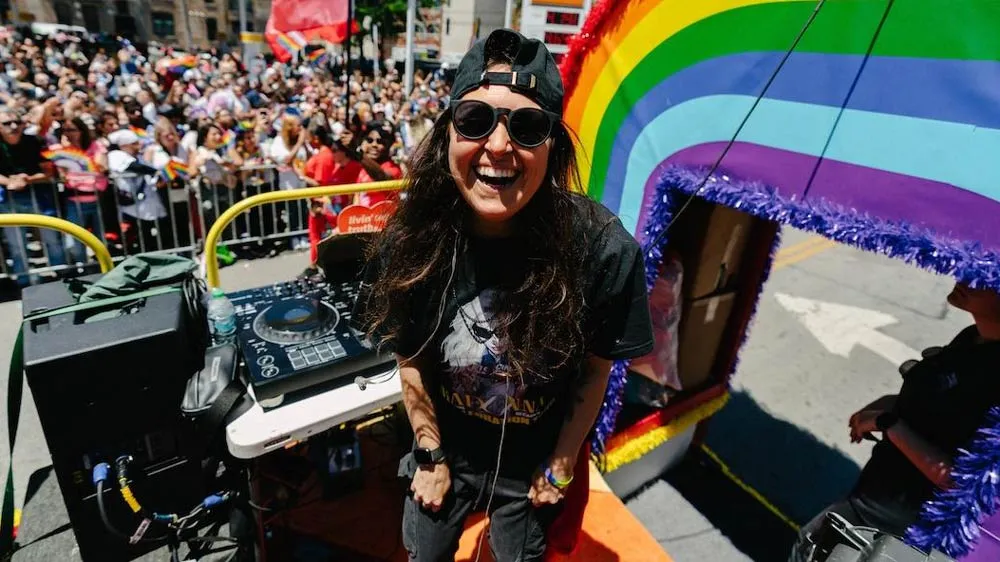July 11, 2014
Looking Back at Nothing :: 25 Years of Growing Up With 'Seinfeld'
Jason St. Amand READ TIME: 6 MIN.
"Seinfeld" was always on in my house. For 25 years, the long-lasting seminal NBC sitcom, that ended up defining television history, was blasting on my family's TVs since I was just one year old.
I remember being about 10, when "Seinfeld" was still on the air, and seeing promos teasing how George's engagement to Susan Ross would resolve. I specifically remember having a conversation with my aunt, telling her they were going to kill Susan off. I was right. I was a fourth grader and "Seinfeld" was already in my bones; part of my DNA. I was ensconced (in velvet!) and knew at a young age and on a deep level how the characters on the show functioned; unknowingly clicking with a group of fictional borderline sociopaths and a team of equally mental but hilarious writers.
Twenty five years ago, on July 5, 1989, "The Seinfeld Chronicles" aired on NBC. Later changed to just "Seinfeld," the sitcom famously about nothing, lasted 180 episodes and nine seasons, nabbing 10 Emmy Awards and three Golden Globes.
Watching the opening scene of the first episode of "Seinfeld" today feels so wrong. Jerry and George talk about the placement of a crucial shirt button, but they're not at the iconic Monk's diner and there is a "Cheers"-like waitress who was supposed to have a recurring roll. That casting didn't happen as the show took a more nontraditional sitcom approach: during the nine seasons of "Seinfeld," Jerry Seinfeld, George Costanza, Elaine Benes and Cosmo Kramer saw no character development, there were hardly any story arcs that connected the episodes and seasons and each episode was like a self-contained universe, giving us countless phrases that seeped into pop culture's lexicon.
Over the last two-and-a-half decades, "Seinfeld" has only gained in popularity, even in reruns. If a network has a failing show, execs know they can pull it and replace it with "Seinfeld" and it'll do just fine in any time slot. That's because anyone who is a fan of "Seinfeld," passive or hardcore, can find some common ground. It's a transcendent show that bypasses, gender, age, orientation and race (for the most part).
Everyone has waited for a table at a Chinese food restaurant, we've all been lost in a parking garage, and we've all dumped others for really inane and petty reasons, i.e.: Low-talker, eating peas one at a time, too tan, yada, yada, yada.
Looking back, it's pretty surprising that my parents even let me watch "Seinfeld" when I was so young. My mother banned me from MTV and she wasn't happy that I watched "The Simpsons" or even "The Ren & Stimpy Show;" but because "Seinfeld" was so charming and funny, she didn't care if I watched episodes like "The Contest," which is considered to be the best "Seinfeld" episode, where the gang enter a contest to see who can hold out from masturbating the longest.
Growing up, I was nerdy and had nerd friends. We cared more about movies, anime video games and TV than we did about our love lives. I wasn't going to learn much from them when it came to sex; that's where "Seinfeld" stepped in, teaching me what part of the female anatomy rhymes with Deloris, shrinkage, how hard it is to open condoms, and even about homosexuality.
The classic "not that there's anything wrong with it" line remains one of the funniest to come from "Seinfeld," (Jerry and George try to convince a college journalist they weren't lovers but didn't want to put down the gay community) and it actually helped me not be ashamed of my own sexuality. It's been said many times before, but the episode, "The Outing," was far ahead of its time. It's something that could have been on "Modern Family" and seems relevant but originally aired in 1993.
"Seinfeld" may have been off the air since 1998, but it really never left us. Besides, the reruns, there have been countless think pieces, essays, reports and even a class about the sitcom. Then there was the also the not-so-great "Bee Movie," Seinfeld's web series "Watch Comedians in Cars Getting Coffee," a 2014 Super Bowl ad, and the pretty awesome "reunion show" that came in season seven of "Curb Your Enthusiasm" in 2009 when Larry David (who co-created "Seinfeld" with Seinfeld and is the model for George) tries to create a new "Seinfeld" project to get back with his estranged wife.
There's also been the hilarious Twitter account called Modern Seinfeld (@SeinfeldToday) where its creators put the four main characters into modern situations revolving around current events and pop culture phenomenon. More recently, three collaborators created Seinfeld themed emjois -- an amazing iOS app that has been submitted to the Apple App Store that has several icons of "Seinfeld" characters and notable objects like the puffy shirt, black and white cookie, Junior Mints, the Festivus poll and more.
"Seinfeld" infamously went off the air when it was still on top of its game -- though it was starting to decline. David left before the show's last season, but returned to work on the controversial finale. Nevertheless, its been able to preserve itself in such a pristine way, its reputation and legacy will never be tarnished. Even at its worst, "Seinfeld" was better than its competitors, all thanks to one simple cynical mantra: "no hugging, no learning." That's something I still live my life by, and as George says: always do the opposite.



